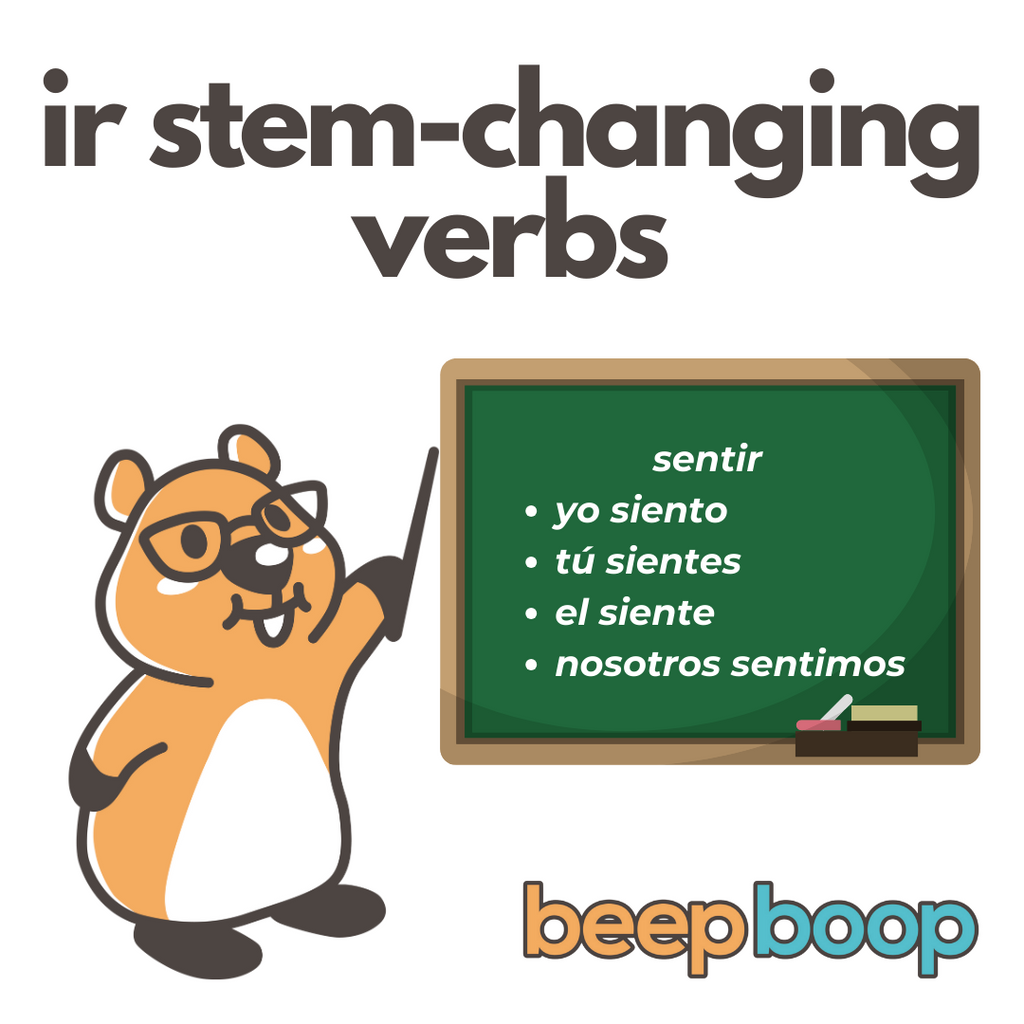Learning Spanish is an exciting journey filled with the beauty of its sounds, the rhythm of its sentences, and, admittedly, the challenge of its grammatical structures. Among these challenges are the notorious stem-changing verbs. Today, we're diving into a specific subset of these verbs: the IR stem-changing verbs. Read the below and then book a free Drill to practice live with our native Spanish instructors. Also, check out TV Club: Episode 17 of Destinos where "Ir stem-changing verbs" is covered in depth. Let's delve deeper into this topic.Whether you're a beginner trying to get a grasp on Spanish conjugations or an intermediate learner looking to refine your understanding, this guide is for you.
What are Stem-Changing Verbs?
Before we delve into IR stem-changing verbs, let's clarify what stem-changing verbs are. In Spanish, these verbs undergo a vowel change in their stem (the part of the verb that precedes the -ar, -er, or -ir ending) when conjugated in certain tenses and moods. This change does not apply to all forms but primarily affects the first, second, and third person singular (yo, tú, él/ella/usted) and the third person plural (ellos/ellas/ustedes) in the present indicative, among other specific cases.
The IR Stem-Changing Verbs
IR stem-changing verbs are a category within these flexible friends that follow the pattern of changing their stem in the present tense and other tenses. They are less numerous than their -AR and -ER counterparts but play a vital role in everyday Spanish. The changes can be categorized into three main types:
- E > IE: Like sentir (to feel), which changes to siento, sientes, siente, sentimos, sentís, sienten.
- O > UE: Such as dormir (to sleep), which changes to duermo, duermes, duerme, dormimos, dormís, duermen.
- E > I: Found in verbs like pedir (to ask for), which changes to pido, pides, pide, pedimos, pedís, piden.
Why Do These Changes Occur?
The stem changes in these verbs are a product of the evolution of the Spanish language over time, stemming from the way vowels in stressed syllables have shifted. These changes make the pronunciation easier and more natural for native speakers, adhering to the phonetic tendencies of the language.
How to Master IR Stem-Changing Verbs
- Memorization: Start with memorizing the most common IR stem-changing verbs. Flashcards, apps, and repetition are your allies here.
- Practice: Use them in sentences, write them out, and speak them aloud. Contextual learning helps cement these verbs in your memory.
- Listening: Tune into Spanish media. Hearing these verbs used in context by native speakers can greatly improve your understanding and usage.
- Exercises: Online exercises and language learning platforms like BeepBoop offer targeted practice to help you master these verbs.
Common Mistakes to Avoid
- Overgeneralizing: Not all IR verbs are stem-changing. Be careful not to apply these changes universally.
- Ignoring Exceptions: Some verbs, like "ir" (to go), are irregular and don't follow the typical stem-changing patterns.
- Forgetting Non-Changing Forms: Remember, the nosotros and vosotros forms do not undergo stem changes for IR verbs in the present tense.
IR stem-changing verbs might seem daunting at first, but understanding their patterns and practicing regularly will make them less intimidating. With time and patience, you'll find yourself using these verbs like a native speaker. Remember, language learning is a journey filled with ups and downs, but every step forward is progress made. ¡Buena suerte en tu aprendizaje!
